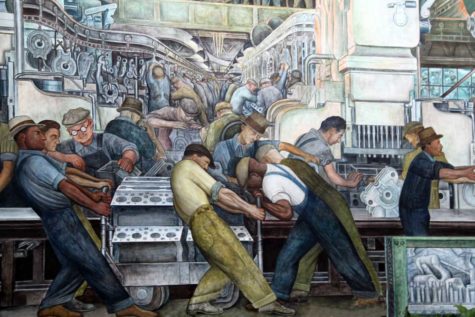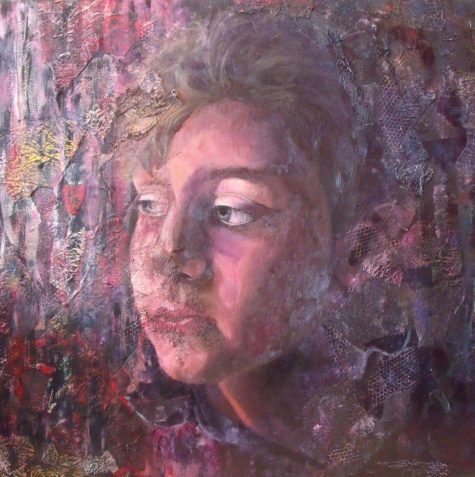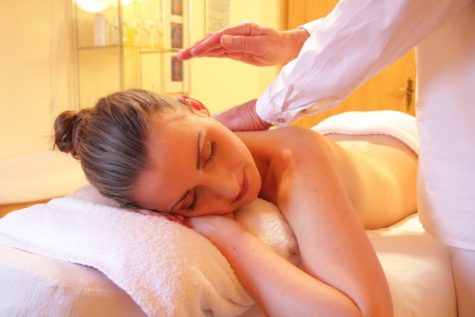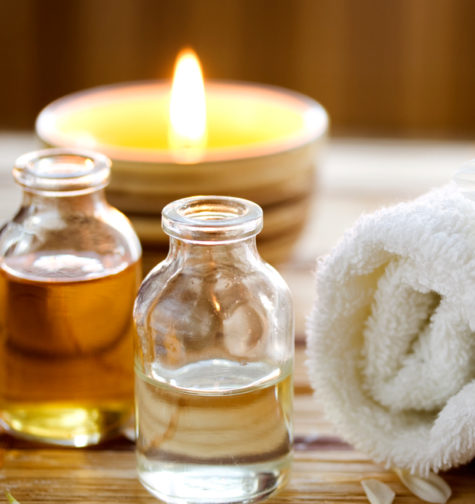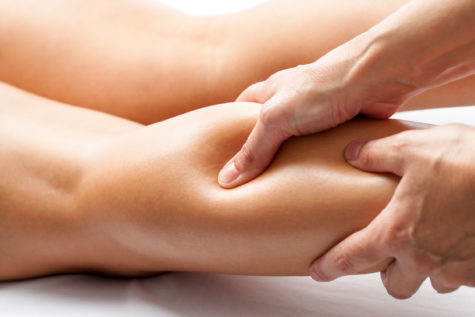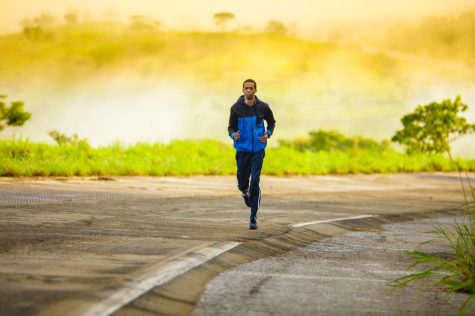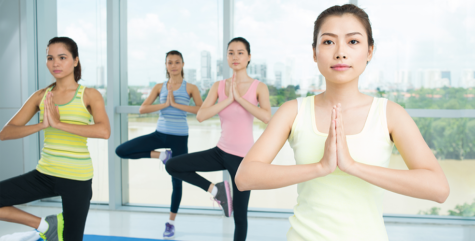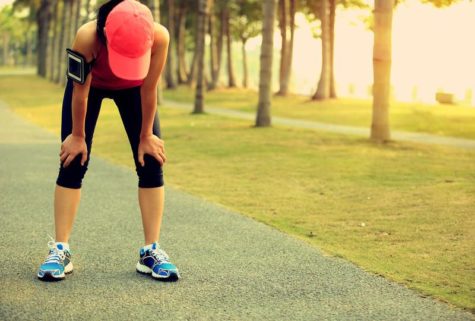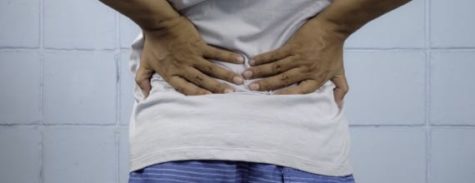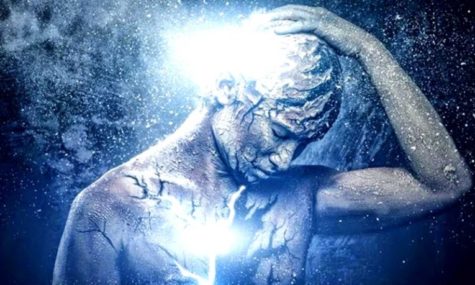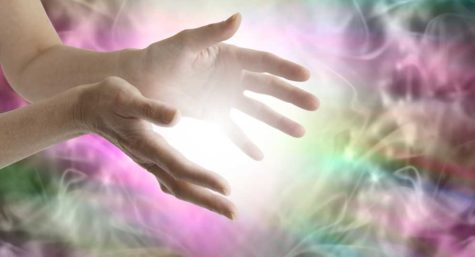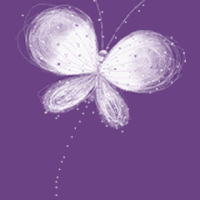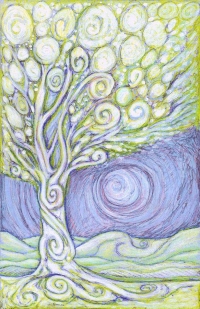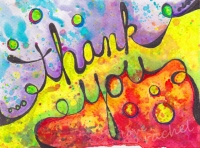Stress
The Stress Factor
From this great little book, Instant Healing, by Serge Kahili King, we have this nice little article about the stress factor and how it relates to illness and healing:
No matter what kind of disharmony one is talking about, no matter what the name is of the disease or illness that may be involved, and no matter whether the condition is primarily physical or mental, there is always some degree of physical tension present.
It’s common to think of tension as a result of illness, except where certain kinds of stress are thought to contribute to illness, but let’s play with another idea. What if tension were not an effect of illness, but the cause? If this were so, then all one would have to do is promote healing would be to relieve the tension.
Before I discuss relieving tension, however, it will be useful to examine the ways in which tension builds up in the first place. I’ll begin by looking at the source of tension itself, a thing called “stress.”
According to Miriam-Webster’s Collegiate Dictionary, 10th edition, stress is “a physical, chemical, or emotional factor that causes bodily or mental tension and may be a factor in disease causation” and “a state resulting from a stress, especially one of bodily or mental tension resulting from factors that tend to alter an existent equilibrium.” In plain language, this means that different kinds of stress can cause tension in the mind and body, and that we can get “stressed” or tense from resistance to change.
In another part of the definition, I have substituted the word “thing” where Webster used “body or body part.” This section says that stress is a “constraining force or influence, as a force exerted when one thing presses on, pulls on, pushes against, or tends to compress or twist another thing, especially the intensity of this mutual force and the deformation caused in a thing by such a force.”
The plain language translation is that stress is not only the action of pressing, pulling, pushing, compressing or twisting. It is also the reaction of pressing, pulling, pushing, compressing, or twisting against the other force. Stress isn’t stress unless there is resistance. It is the resistance that causes the tension, and the tension that causes the problems.
Note also that a “constraining force or influence” can also come from a lack of something, such as food, water, or love, and is not limited to something active.
Stress in and of itself, isn’t bad. It’s vital for building muscles, moving, breathing, motivation, and a number of other things that are useful and necessary. But if you try to lift a heavy weight for too long, the muscles will break down instead of build up. If you eat so much healthy food that your stomach is ready to burst, you are doing yourself more harm than good. If you try to save the world by making people change, you’ll be so stressed out that you’ll accomplish very little.
Examine your own experience and you will find that it is not just the ordinary stress of daily living, but excessive sudden stress (acute stress) or sustained excessive stress over a period of time (chronic stress) that causes the severe problems. Too much tension, one could say, although “too much” will differ among individuals and circumstances.
A deeper explanation of the different types of stress can be found here:
- The Physical Stress Factor
- The Emotional Stress Factor
- The Mental Stress Factor
- The Spiritual Stress Factor
Many modern healing systems are often ineffective because they are overly exclusive. In other words, they tend to treat illness as being caused only by physical or emotional or mental or spiritual conditions, and to reject some or all of the others as having no bearing on the problem.
Yet tension can come from any of these realms and there is usually a combination of more than one in a particular symptom. Even something as simple as a smashed finger can be related to feelings of guilt, or confusion about a life direction, or to spiritual alienation, or to all three at once.
If the finger is only treated at the physical level, the healing will be slowed down by the tension being maintained by one of the other conditions. A healer ignores any one of them at the peril of the healee. Frequently, dramatic improvement in mental health occurs through nutrition, tumors are removed with hypnosis, and emotional release cures spiritual apathy.
In my view of healing, excessive physical, emotional, mental, or spiritual stress, or any combination of these, cause the excessive tension that produces illness or disharmony. It follows, therefore, that reducing or removing the stress, either the external condition or the internal resistance, would allow a relaxation of the tension that would either result in a healing or greatly benefit the healing process.
The Emotional Stress Factor
This is part of a series of articles about The Stress Factor, from Instant Healing by Serge Kahili King.
Emotional stress is usually thought to be generated externally, in other words, created by what someone else is doing to you. This perception is so widespread that many people are paid compensation for the emotional stress that others have caused them.
In fact, emotional stress happens only when you become afraid or angry or excited, and all of these are internally generated responses. It’s easier, and sometimes financially profitable, to blame others for making you feel bad, but you really do it to yourself. One person may be bothered excessively by a situation that would be taken in stride by another. Your attitude toward what others do has more effect on you than what they do.
The emotions most likely to cause stress are fear, anger, and excitement. Of course, there are variations and levels of these emotions. Emotions related to fear are anxiety, panic, terror, and embarrassment. Some related to anger are jealousy, envy, sadness, depression and grief. Excitement includes enthusiasm and positive anticipation.
In a state of fear, your body is trying to get away from what is fearful. It would actually run if it could. If you decide not to run, the impulse to do so is still there, and the conflict between the impulse to run and the decision not to causes physical tension. In extreme fear, the tension can become so great that fainting occurs or body functions are impaired.
In an angry state, your body is trying to push something away, forcefully change it, or hurt it, and any of these impulses causes tension, too, especially when they are suppressed.
Fear and anger are used to resist people and situations and that gets translated by your body into physical tension. Sustained excitement can lead to tension caused by the body’s need to rest. Acute or chronic fear, anger, or excitement can be very stressful in terms of the physical tension they produce.
Of course, direct muscle tension is not the only physical response to emotional stress. Chemical changes occur as well which can produce stress effects on other systems of the body that lead indirectly to increased physical tension. In fact, emotional and physical responses are so interrelated that chemical changes in the body, either natural or caused by food, drugs, or herbs, can induce emotional stress and physical tension. Endorphins, caffeine, alcohol, heroin, and cocaine or some of the better known substances that can do this.
The Physical Stress Factor
This is part of a series of articles about The Stress Factor, from Instant Healing by Serge Kahili King.
Physical stress is a relatively simple phenomenon to describe. After engaging in physical effort for a long time the body begins to resist the activity more and more until exhaustion or accident forces it to stop.
I would point out, though, that the more enjoyable the effort seems to be, the longer you can continue it, because you are not resisting it as much. Low resistance means less tension, and less tension means less effect from the stress. If you love to play volleyball, you may be able to do it for hours and hours and end up pleasantly tired but exhilarated. If you hate to do housework or clean out the garage, however, you may end up exhausted and achy after a couple of hours.
Another kind of physical stress that produces tension occurs when you are poked or prodded with something sharp, hard, or excessively hot or cold. Although you don’t think it’s strange to be cut or bruised or burned by such contact, some people’s injuries remain for a long time, while others are able to heal very quickly, and still others can walk on fire or get punctured by nails without harm.
Having walked on extremely hot lava rocks barefoot without injury, and having healed broken bones, burns, and bruises of my own in under an hour many times, I can tell you that reducing tension as quickly as possible is a critical factor in the length of the healing process.
Physical stress can also come from reactions to the environment. Allergies are so common that many people take them for granted, and some people are highly sensitive to trace amounts of natural and man made chemicals and to electromagnetic radiation. The body tries to protect itself against such intrusions not only by internal chemical means, but also by creating a barrier of muscle tension (note that our internal organs and nerves are surrounded by muscle tissue). And then there is the stress caused by such things as hunger, thirst, and lack of movement. It isn’t very hard to see how physical stress can cause physical tension.
The Mental Stress Factor
This is part of a series of articles about The Stress Factor, from Instant Healing by Serge Kahili King.
Your slightest thought causes a slight physical response. Your strongest thoughts cause strong physical responses. Remembering, imagining, planning, speculating, wondering, meditating, and any other form of mental activity have corresponding physical effects.
That means your body automatically tries to carry out the physical equivalent of your thoughts by activating your nervous system, modifying your breathing pattern, altering your hormonal and other chemical output, and adjusting your muscle tension, among other things.
If you remember water skiing, the muscles you used when you did it twitch right now in resonance with the mental act of remembering. If you wish you could kick your boss in the rear, the muscles required to do that tense up in preparation for the act. The more abstract your thinking – that is, the less related your thinking is to any kind of physical action – the less response there is in your body. However, sustained abstract thinking accompanied by shallow breathing and an unchanging posture can result in unhealthy physical tension.
Criticism, denial, doubt, confusion, and conflicting beliefs or motivations all produce mental stress and can cause physical tension. Criticism, by itself, is similar to anger without the depth of emotion. When you criticize, you are experiencing an impulse to push, change, or hurt, and when the body tries to respond to the impulse, the effort produces physical tension.
Denial is a mental version of fear, with the same impulse to move away from something and the same kind of tension that results. Doubt occurs when ideas are in conflict, and confusion occurs when choices are in conflict.
When your stressful thoughts also generate stressful emotions, the effects of emotional stress are added to the effects of mental stress and physical tension is increased even more.
The Spiritual Stress Factor
This is part of a series of articles about The Stress Factor, from Instant Healing by Serge Kahili King.
The main symptoms of what I call spiritual stress are apathy and the severe form of boredom called ennui, although headaches and other physical and behavioral symptoms can also be connected with spiritual stress.
Apathy comes from a habit of increasingly distancing oneself from surrounding values, emotions, and activities to the point where a person is less and less stirred or motivated by the things that affect and interest other people. Apathy could be called the spiritual version of anger, because it seems to be a coping response to a sense of being helpless or frustrated.
Instead of feeling angry or depressed about being helpless or frustrated, some people simply suppress feeling. Unfortunately, the only way to do this is to keep the muscles in a state of tension so that feelings can’t be felt. And more unfortunately, if enough additional stress of any kind is added to the mix, the effort to hold back feelings may break down and allow an outburst of violence. It is quite common for people who suddenly break out in a frenzy of violence.
It is quite common for people who suddenly break out in a frenzy of aggressive activity to be described by people who know them as “quiet and unobtrusive.” I remember meeting a man who was very placid until someone did something he didn’t like. Then he became quietly menacing. I’m glad that no one did anything to really upset him while I was around.
Ennui is the spiritual counterpart of denial. The state of ennui however, is characterized by a denial of importance rather than existence. This is related to a sense of being unwanted or unloved. By this method of coping, a person tries to pretend that it doesn’t matter. It’s a variation on running away and therefore a version of fear. When this form of turning away from others and from the world becomes acute or chronic, it can also produce physical tension.
A curious form of spiritual stress comes from excessive fantasizing or meditation. The effect is something like the result of eating too much good food. These activities may be termed excessive when they result in physical tension. While the effect varies greatly among different individuals, the process is the same.
When consciousness is “away” from the body for too long, there is an increase in physical tension, which may include symptoms such as headaches and anxiety or worse. This effect is aggravated when fantasizing or meditation is used as an escape from ordinary reality.
It’s possible that even “healthy” fantasizers and meditators may feel a more or less subtle sense of relaxation or relief when they come back to body awareness. To some, the physical response of returning to body awareness is so strong that it seems as if their spirit is “slamming” back into the body because there is often a significant shaking or jerking of the muscles. A close study of this phenomenon has convinced me that the actual effect is one of a sudden release of tension.
Therapeutic Value of Massage
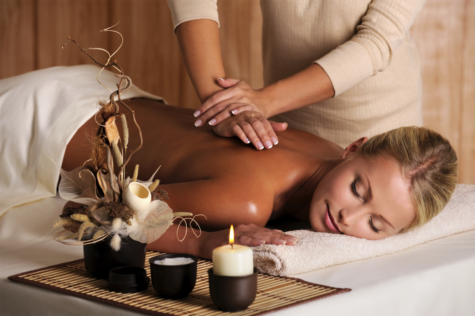
Massage is an excellent form of passive exercise. The word is derived from the Greek word ‘massier’ which means to knead. It involves the scientific manipulation of the soft tissues of the body. If correctly done on a bare body, it can be highly stimulating and invigorating. As far back as 400 B.C. , the great Hippocrates, the father of medicine, employed massage and manipulation in healing his patients. Since then it has been used as a mode of treatment for many ailments and it has restored many a sufferer to health and vigor.
Benefits
The general massage, dealing with all parts of the body, is highly beneficial in many ways. It tones up the nervous system, influences respiration and quickens the elimination of poisons and waste material from the body through the various eliminative organs such as the lungs, skin, kidneys and bowels. It also boosts blood circulation and metabolic processes. A massage removes facial wrinkles , helps to fill out hollow cheeks and neck and eases stiffness, sore muscles and numbness.
Various movements
There are five fundamental modes of manipulation in massage and these are : effleurage (stroking), friction ( rubbing), petrissage ( kneading), tapotment (percussion) and vibration (shaking or trembling).
- Effleurage
This involves sliding with the hands, using long even strokes over the surface of the body. Effleurage is performed in five ways, namely stroking with palms of two hands; the palm of one hand; the knuckles; the ball of the thumb and the finger tips. Effleurage increases blood circulation and soothes the nervous system. It also warms and relaxes. It is very helpful in atrophied condition of the skin.
- Friction
The movements, which are circular in nature are performed with the help of the thumb and tips of fingers or the palm of the hand towards the joints or around the joints. Friction limbers up joints, tendons, and muscles and facilitates the removal of deposits by breaking them. It also helps in reducing swelling after nerve inflammation.
- Petrissage
This is the process of kneading, pressing and rolling of the tissues and is performed with one or both hands, with two thumbs or with thumbs and fingers. One should apply heavy pressure for deep kneading and light pressure for superficial kneading. Petrissage is a treatment of the muscles. It increases nutrition, strengthens muscles, relieves intestinal congestion and helps elimination of the poisons. It boosts long activity and cellular respiration, eliminates fatigue poisons and tones up nerve endings.
- Tapotement
This involves hacking, tapping, clapping and beating and is achieved by striking the body rapidly. Short and quick blows are generally given from the wrist. Tapotement helps in atrophied condition of the muscles. It increases blood supply, soothes nerves and strengthens muscles.
- Vibrations
This is achieved by rapidly shaking the pressing movements by use of the hand or fingers on the body. Vibrating hand should move constantly. This is beneficial in neuritis and neuralgia after the inflammatory stage is over. It stimulates circulation, glandular activity and nervous plexuses. It also helps in bowel movement. Another form of massage helpful in most elements is the vibratory massage. This can be done by trained persons only. The vibratory muscles is more efficiently administered by a special, electrically operated machine.
Material for Massage
Cotton seed oil is most commonly used for massaging, but butter is used for filling out cheeks and the neck and also for breast enlargement. If the patient is averse to oil, talcum powder may be used. Oil should not be used by persons with excessive body hair. General body massage may be done for 40 to 45 minutes and local body massage for 10 to 15 minutes. The oil should be washed off completely after massage.
Therapeutic Uses
Massage can be used with advantage as a method of treatment for many common ailments. The various forms of massage and their usefulness in various diseases are described here in brief.
- Massage of the Joints
Stiff and swollen joints can be cured by massage combined with mechanical movements. Massage is, however, not recommended in serious inflammatory cases of the joints and in tubercular joints. It should also be avoided in infectious diseases like diphtheria and gonorrhea which cause formation of pus as massage may spread the pus to the entire system.
Sprains and bruises can be cured by massage. In these cases, affected parts should first be bathed with hot water for 15 to 30 minutes. Next the massage should be done for a few minutes. Gentle stroking and kneading is recommended on and around the injured tissues.
Fractures can also be treated through massage. This form of massage is of great help in atrophy of the muscles which usually follows if the muscles are not used for any length of time. This condition may also be brought about by injuries, diseases of the joints, inflammation of the muscles and nerves, and by too long use of cats, bandages and splints.
A human being carries one half of the weight of his body in the form of muscular tissues. One fourth of the blood supply circulates in the muscles. When one gets a good massage treatment, the muscles get regenerated and are then capable of holding half of the blood supply. Massage thus provides additional nourishment to feed the muscular tissues, helping them to grow strong. Tapping, striking, and vibrating help the muscle to develop its contractile power.
Muscle massage is brought by first effleurage, kneading, followed by tapotement. Later, active and passive movements are given. Massage is employed for eliminating muscle contraction and for breaking of adhesions. A little moderate kneading, and percussion cause muscles to contract and become stronger. Deep circular kneading and vibration loosens the muscles. Kneading under and round the muscles breaks up adhesions.
- Massaging the nerves
Massage benefits many nerve problems. In case of acute inflammation of the nerves, massage should be done carefully. Light and gentle stroking are recommended. Deep pressure should not be used on swollen nerves for it will increase the inflammation. All that is needed is just a gentle tapotement or beating of the nerve.
Nerve compression is recommended for soothing nerves. Grasp the limb with both hands, and create firm pressure around and down the arm. Start with the shoulder and proceed down to the wrist. As you leave the grip, bring the hands down a little and make another pressure. As a result, blood circulation will increase.
Spinal nerve compression is extremely beneficial. It is done by the palm of the hand. Vibration of the fingers stimulate it. Sleeplessness can be cured by long slow and gentle stroking down the spine and entire back.
- Abdominal Massage
This form of massage is beneficial in constipation. It stimulates the peristalsis of the small intestines, tones up the muscles of the abdomen walls and mechanically eliminates the contents of both large and small intestines. Abdominal massage should not be done in general, femoral, inguinal and umbilical hernia, inflammation of the uterus, bladder, ovaries and Fallopian tubes, kidney stones, bladder or gall bladder, ulcers of the stomach and intestines, and pregnancy.
Abdominal massage should not be done after a heavy meal, but after two hours or so. The bladder should be emptied before the massage. The patient is made to lie on his back with his knees drawn up. This enable the abdomen wall to relax. The masseur should stand at the right side of the patient and use his finger tips for friction round the umbilical region from right to left. He should likewise alternatively knead the walls and roll with both hands, making deep and firm pressure. He should knead with the hand and finger tips and keep clear of any wound or tender places. He should later take up massaging of the larger intestines.
The manipulation of the large intestine should begin on the right side. Keep it going upwards and across the transverse colon and move right down on the left side to the signoid flexure and rectum. Circular kneading should be done with the help of the three middle fingers. At the same time press into the contents of the abdomen, following the course of the larger colon with a crawling motion. Keep kneading by means of a few circular movements in one spot with the help of finger tips. Keep moving the fingers a little further along. Knead repeatedly.
Use knuckles of the hand to make deep pressure along the large colon, moving the hands along after each pressure. Once the kneading of the abdomen is over, follow up by tapotement with both hands cupped or use the knuckles of the hand. Vibration may also be employed. The patient could also be asked to do some gymnastic exercises for strengthening the walls of the abdomen.
Since blood pressure increases during abdominal manipulation, patients with hypertension should avoid abdominal massage. Massage should also be avoided in cases where there has been recent bleeding in the lungs, the stomach or the brain.
- Chest Massage
Chest massage is helpful in many ways. It strengthens the chest muscles, increases circulation and tones up the nervous system of chest, heart and lungs. It is especially recommended in weakness of the lungs,palpitation and organic heart disorders. Bust and mammary glands can be developed by proper massage. The patient is made to lie on the back with the arms at the sides.
The masseur starts manipulating the chest by means of strokes with both hands on each side of the breast bone. A circular motion is formed by the movement made up and down, moving down the chest. Next the muscle kneading is done by picking up the skin and muscles with both hands. Treatment is given to both sides of the chest likewise. Circular kneading is next done by placing one hand on each side of the breast bone and making the circular motion outward towards the side. Tapotement follows by hacking and slapping.
- Massage of Back
The purpose of the massage of the back is to stimulate the nerves and circulation for treating backache, rheumatic afflictions of the back muscles, and for soothing the nervous system. The patient is made to lie down with the arms at the sides. The masseur effleurages the back from the shoulders downwards using both hands on each side of the spine. Stroking is done from the sacrum upward. Friction follows with each hand at the sides of the spine going down slowly.
Next, kneading by muscle picking is done with squeezing. Alternate rapid pushing and pulling movement of the hands sliding down the spine. Circular kneading should also be done. The treatment should end by slapping, hacking and cupping on each side of the spine. Gentle stroking and light kneading of the back is relieving and soothing. Percussion and vibration result into stimulating experience. Vibration of the end of spine benefits the sacral nerves and pelvic organs. It is recommended in constipation, hemorrhoids, weakness and congestion of the bladder and sexual organs.
- Massage of the Throat
This helps to overcome headache, sore throat and catarrh of the throat. The patient is made to throw his head back. The masseur places palms of both hands on sides of neck with thumbs under the chin, and fingers under the ears. A downward stroke is next made towards the chest over the jugular veins. Do not exert heavily on the jugular veins.
Exercise in Health and Disease

A world famous physical educationist, Eugene Sandow, has very aptly said, ” Life is movement, stagnation is death. ” Physical exercise is essential for the maintenance of normal condition of life. Lack of natural exercise is one of the chief causes of weakness and ill-health.
In recent years, the need for exercise has been recognized even in sickness. Physio and occupational therapy are now standard procedures in medicine to restore the use of muscles and nerves that have been injured by disease or by accident. Patients with organic ailments are now advised to stay in bed for the minimum period considered necessary.
Exercise and Activity
For corrective living, it is essential to differentiate between exercise and activity. While both are important as they are involved in vital physical movement, they vary in degree and benefits. Both employ the body in voluntary movement.
Activity uses the body to a limited degree and generally to achieve a specific purpose. Exercise employs the body over the widest possible range of movement for the particular purpose of maintaining or acquiring muscle tone and control with maximum joint flexibility. Activity requires less physical effort and often less conscious effort once the routine has been established. Exercise demands considerable physical effort and is more beneficial as mental concentration is simultaneously employed.
Benefits
Systematic physical exercise has many benefits. The more important benefits are mentioned below: Regular exercise taken properly can achieve the increased use of food by the body, which contributes to health and fitness. The basal metabolic rate and habitual body temperature will slowly rise during several weeks of physical exercise, if the program is not too hard. The healthy person usually has abundant body heat and a warm radiant glow.
- Regular progressive physical exercise can bring about the balance of automatic, or involuntary , nervous system. The tone of the vagus nerve, one of the nerves that control sensation and motion, is strengthened. This accounts for stronger pulse waves, higher metabolism and better circulation.
- Exercise can prevent or reduce gravitational ptosis or sag, as it is commonly called. Ptosis results from uneven flow of blood in the feet, legs and lower abdomen.
- Improved capillary action in the working of muscular and brain tissue results from exercise carried to the point of real endurance. This permits greater blood flow and gives the muscles, including the heart, more resistance to fatigue. Massage, heat and moderate exercise are relatively ineffective in producing additional capillary action as compared with vigorous exercise.
- The full use of the lungs in vigorous exercise can reduce or prevent lung congestion due to lymph accumulation.
- Gas and intra-intestinal accumulations can be reduced by exercise that acts to knead and squeeze or vibrate the intraintestinal mass.
- Better respiratory reserve is developed by persistent exercise. This ensures better breath holding, especially after a standard exercise. With greater respiratory reserves, exercise become easier.
- Improvement in tone and function of veins can be accomplished by repetitiously squeezing and draining the blood out of them and then allowing them to fill.
- Sweating in exercise aids kidneys by helping to eliminate the waste matter from the body.
- Consistent exercise leads to improvement in quality of blood. Studies have shown improved hemoglobin levels, relatively greater alkalinity, improved total protein content and a grater red cell count.
- Systemic exercise promotes physical strength and mental vigor and strengthens will power and self control leading to harmonious development of the whole system.
Exercise promotes longevity Medical researchers at Harvard and Standford Universities who studied the habits and health of 17,000 middle-aged and older men, reported the first scientific evidence that even modest exercise helps prolong life.
Dr. Ralph S. Paffenberger, the visiting professor of epidemiology at the Harvard School of Pubic Health, who is the principal author of the report said, ” We have found a direct relationship between the level of physical activity and the length of life in the college men we have studied. ” He added,” This is the first good evidence that people who are active and fit have a longer life span than those who are not. ”
A strong connection between a hard and a healthy hard has also been convincingly demonstrated in the same study. The study showed that the less active persons ran a three times higher risk of suffering a fatal heart attack than did those who worked the hardest. Review of fatal heart attacks revealed that the less active men were also three times more likely to die unexpectedly and rapidly within an hour after the attack.
A parallel research report from doctors in Dulles also concluded, after a study of the lives and habits of 6,000 men and women, that the physically fit were less likely to develop hypertension. Dr. Steven N. Blair who headed the research group said, ” We followed the physical health and habits of these people for an average of four-and-a-half years and the data showed that the lack of physical fitness leads to hypertension. ”
Exercise increases calorie output. The body fat can be reduced by regular exercise. It is therefore, useful for weight reduction in conjunction with restricted food intake. According to a study by Dr. Peter Wood of Stanford University Medical School, author of “California Diet and Exercise Programme”, very active people eat about 600 more calories daily than their sedentary counterparts but weight about 20 per cent less.
Up to 15 hours after vigorous exercise, the body continues to burn calories at a higher rate than it would have without exercise. Moderate physical exercise has been found to be accompanied by less obesity and lower cholesterol levels. Regular exercise plays an important role in the fight against stress. It provides recreation and mental relaxation besides keeping the body physically and mentally fit. It is nature’s best tranquilizer.
Chronic fatigue caused by poor circulation can be remedied by undertaking some exercise on a daily basis. It helps relieve tension and induces sleep. Moderate physical exercise at the end of a try day can bring a degree of freshness and renewed energy.
Exercise also plays an important role in the treatment of depression. According to Dr. Robert Brown, a clinical associate professor at the University of Virginia School of Medicine, ” Exercise produces chemical and psychological changes that improves your mental health. It changes the levels of hormones in blood and may elevate your beta-endorphins (mood-affecting brain chemicals). Exercise also gives a feeling of accomplishment and thereby reduces the sense of helplessness. ”
Methods of Exercise
Several systems of exercise have been developed over the years, the most popular among them being the Swedish system and yoga asanas, the later having been practiced from ancient times in India. Whichever system you choose to adopt, the exercises should be performed systematically, regularly and under proper guidance. To be really useful, exercise should be taken in such a manner as to bring into action all the muscles of the body in a natural way.
Walking is one such exercise. It is, however, so gentle in character that one must walk several kilometers in a brisk manner to constitute a fair amount of exercise. Other forms of good exercise are swimming, cycling, horse-riding, tennis, etc.
Precautions
Vigorous exercise of any kind should not be taken for an hour and a half after eating, nor immediately before meals. Weak patients and those suffering from serious diseases like cancer, heart trouble, tuberculosis and asthma should not undertake vigorous exercise except under the supervision of a competent physician.
If exercising makes you tired, stop immediately. The purpose of exercise should be to make you feel refreshed and relaxed and not tired. The most important rule about the fitness plan is to start with very light exercise and to increase the effort in gradual and easy stages. The sense of well-being will begin almost immediately. One can start off with a brisk walk for 15 to 20 minutes. A comfortable sense of tiredness should be the aim.
It is valueless and possibly harmful to become exhausted or seriously short of breath. Perhaps, one should aim at activities which need about two-thirds of one’s maximum ability. One way to assess is to count your own pulse rate.
Counting of pulse is quite easy. Feel the pulse on your left wrist with the middle three fingers of your right hand. Press just firmly enough to feel the beat easily. Now count the number of beats in 15 seconds, with the help of a watch with clear second hand and calculate your rate by multiplying by four. At rest heart beats 70 to 80 times a minute. This rate increases during exercise. Really vigorous can produce rates as high as 200 beats per minute or more. Reasonable aim is to exercise at about two-thirds of maximum capacity. It follows that heart rate should be about 130 per minute during and just after exercise. Always avoid over-exertion and never allow your pulse go above 190 per minute minus your age.
Tension Caused by Trapped Emotions
Trapped emotions settle into different areas of the body and cause muscle tension and pain. Here’s a list of common emotions and the places they get trapped in:
- Shoulders – Burdens and responsibilities
- Neck – Fear and repressed self expression
- Upper Back – Grief, sorrow, and sadness
- Middle Back – Powerlessness and insecurity
- Lower Back – Guilt, shame, and unworthiness
- Stomach – Inability to process emotions
If you are not sure how to release those emotions, see this post on Deepak Chopra’s 7 step method to release emotional turbulance.
Releasing Emotional Turbulence
It’s not easy to deal with painful emotions head-on. But it’s a key to good health and well-being physically, mentally, and spiritually. If we don’t deal with pain when it occurs, it will resurface as compounded emotional toxicity later on — showing up as insomnia, hostility and anger, or fear and anxiety.
As a further complication, if you don’t know how to deal with feelings of anger and fear, you’re likely to turn them inward at yourself, believing, “It’s all my fault.” That guilt depletes our physical, emotional, and spiritual energy until any initiative or movement feels impossible. We feel exhausted and paralyzed, leading to depression.
You can learn how to recognize painful emotions right away and how to effectively “metabolize” and eliminate pain.
Overcoming difficult emotions such as fear, anger, guilt, and anxiety can bring the same disguised benefits that dealing with a physical illness can bring. Patients suffering from life-threatening illness often report that their diseases have taught them to love and value the other people in their lives more deeply than before they became ill. During recovery they learn to appreciate and understand areas of life that they took for granted before. While anger, fear, and worry are not diseases, we can grow from them even as we process them to become the person we want to be.
By turning to our inherent intelligence, harmony, and creativity, we can create a positive outcome; but if we are emotionally turbulent, we are too agitated to access that possibility.
Why meditation is part of this exercise:
Through meditation we can experience our silent self beyond our thoughts and emotions. This is our internal reference point for equilibrium. From here we can create a desired outcome. To restore balance in our life, meditation must be an essential ingredient.
It is also important to support this with balanced activity in the basic areas of diet, exercise, and sleep. While some of these meditation exercises do not require any, we recommend our simple and effective meditation accessories for beginners.
Assuming these fundamental balancing components are in place, I would offer an additional exercise to specifically address what to do in the face of intense anxiety and fear.
Metabolize pain with this seven-step exercise:
Toxic, turbulent emotions have one cause — not knowing how to deal with pain. Pain is normal in life, but suffering isn’t. When we do not know how to deal with pain, we suffer.
- 1. Identify and locate the emotion physically
Set aside a few minutes when you won’t be disturbed. Pick any quiet place where you feel calm. It is recommended to take a seat that is sturdy, yet comfortable. The best practice is sitting up straight. The floor is not a bad idea, but this can become uncomfortable very quickly. Sit in a relaxed position and close your eyes. For a few minutes, just meditate in silence. Focus on your breathing — or if you prefer, you may use a mantra.
Now with eyes still closed, recall some circumstance in the recent past that was upsetting to you. It may be a time when you felt you were mistreated, an argument with your partner, or perhaps a past injustice at work. Identify some instance where you felt emotionally upset.
For the next 30 seconds, think in detail about that incident. Try to picture what actually happened as vividly as you can, as if you were reporting it for a newspaper. Here, you are the observer watching this event. You are not the event, argument, or emotional upset; you are merely witnessing what is happening from the perspective of your silent self. You are carrying the effect of the meditation you just did, allowing you to maintain a vantage point that is not overshadowed by the intensity of the emotions.
Now identify exactly what you are feeling. Put some word on the incident that describes what you are experiencing. Be as precise as you can. Do you feel unappreciated? Insulted? Treated unfairly? Give the feeling a name. Come up with a word that epitomizes the painful experience. Focus your attention on that word.
- 2. Witness the experience
Gradually allow your attention to move away from the word. Let your attention wander into your body. Become aware of the physical sensations that arise in your body as a result of the emotion you’ve identified.
These two elements — an idea in the mind and a physical sensation in the body — are what an emotion truly is, and they can’t really be separated. This is why we call it a feeling — because we feel emotions in our bodies.
Let your attention pass through your body as you’re recalling this experience. Locate the sensations the memory brings up. For many it’s a pressure in the chest or a sensation of tightness in the gut. Some feel it as pressure in their throat. Find where it is in your body that you’re feeling and holding the emotional experience.
- 3. Express the emotion
Now express that feeling. Place your hand on the part of your body where you sense that the feeling is located. Say it out loud: “It hurts here.” If you’re aware of more than one location for the pain, move your hand from place to place. At every location, pause for a moment and express what you’re feeling. Say, “It hurts here.”
When you experience physical discomfort, it means that something is unbalanced in your experience — physically, mentally, or spiritually. Your body knows it — every cell in your body knows it. Befriend these sensations and their wisdom, because the pain is actually leading you to wholeness.
Writing your feelings out on paper is also a valuable way to express the emotion. This is especially effective when you can write out your painful experience in the first person, in the second person, and finally from the perspective of a third-person account.
- 4. Take responsibility
Be aware that any painful feelings you experience are your feelings. These feelings are happening inside your body now as you remember the pain, even though nothing is actually taking place in the material world. You’re only remembering what happened, yet your body is reacting with muscle contractions, hormonal secretions, and other responses within you. Even when the painful incident was occurring in the material world, the effect was entirely within you. You have a choice in how you interpret and respond to emotional turbulence. Recognizing this is taking responsibility for your feelings.
This doesn’t mean you feel guilty. Instead, it means you recognize your ability to respond to painful situations in new and creative ways. By taking responsibility for your feelings, you can also gain the power to make the pain melt away. You’re no longer blaming anyone else for having caused the pain, so you no longer have to depend on anyone else to make it go away. Hold that understanding in your consciousness for the next few moments.
- 5. Release the emotion
Place your attention on the part of your body where you’re holding the pain, and with every exhalation of your breath, have an intention of releasing that tension. For the next 30 seconds, just feel the painful sensation leaving your body with every breath. Some people find that making an audible tone that resonates in that part of your body where the pain is localized helps to loosen and lift the contraction away.
You can also experiment to discover what works best for you. For some people, singing or dancing does the trick. You may try deep breathing, using essential oils, or taking a long warm bath. Finally, if you have written out your emotions on paper, it can be helpful to ritually burn the paper and offer the ashes to the winds.
- 6. Share the outcome
Sharing the outcome of releasing your pain is important because it activates the new pattern of behavior after the old painful pattern is released. Imagine that you could speak to the person who was involved in that original painful incident. What would you say to that person now?
Bear in mind that he/she was not the real cause of your pain. The real cause was your response. In your transformed state, you are now free. So you can share what happened without blame, manipulation, or seeking approval. Perhaps they intended to cause you pain, and you may have unwittingly collaborated in that intention. Maybe you would like to say you no longer intend to fall into such traps.
Whatever you say is totally up to you. As long as you have an awareness of the steps we’ve taken so far in this exercise, whatever you say will be right for you.
- 7. Celebrate the process
Now you can celebrate the painful experience that had taken place as the valuable material that helped you move to a higher level of consciousness. What was previously a disconnected, destructive, and disabled part of your psyche is now integrated and contributing its power toward your greater spiritual goal. Instead of responding to the situation with a pain reflex, perpetuating the problem, you’ve turned it into an opportunity for spiritual transformation. That is something to celebrate! Go out for a nice dinner or buy yourself some flowers or a present to honor the new you.
Use this exercise whenever you feel upset, to free yourself from emotional turbulence and the underlying pain. When you do that, you’ll find that opportunities will arise more often in every area of your life.
Found at: Gaiam.com
What is Reiki?
Reiki is a Japanese technique for stress reduction and relaxation that also promotes healing. It is administered by “laying on hands” and is based on the idea that an unseen “life force energy” flows through us and is what causes us to be alive. If one’s “life force energy” is low, then we are more likely to get sick or feel stress, and if it is high, we are more capable of being happy and healthy.
The word Reiki is made of two Japanese words – Rei which means “God’s Wisdom or the Higher Power” and Ki which is “life force energy”. So Reiki is actually “spiritually guided life force energy.”
A treatment feels like a wonderful glowing radiance that flows through and around you. Reiki treats the whole person including body, emotions, mind and spirit creating many beneficial effects that include relaxation and feelings of peace, security and well being. Many have reported miraculous results.
Reiki is a simple, natural and safe method of spiritual healing and self-improvement that everyone can use. It has been effective in helping virtually every known illness and malady and always creates a beneficial effect. It also works in conjunction with all other medical or therapeutic techniques to relieve side effects and promote recovery.
More Reiki information can be found here: Twofeathers Reiki


